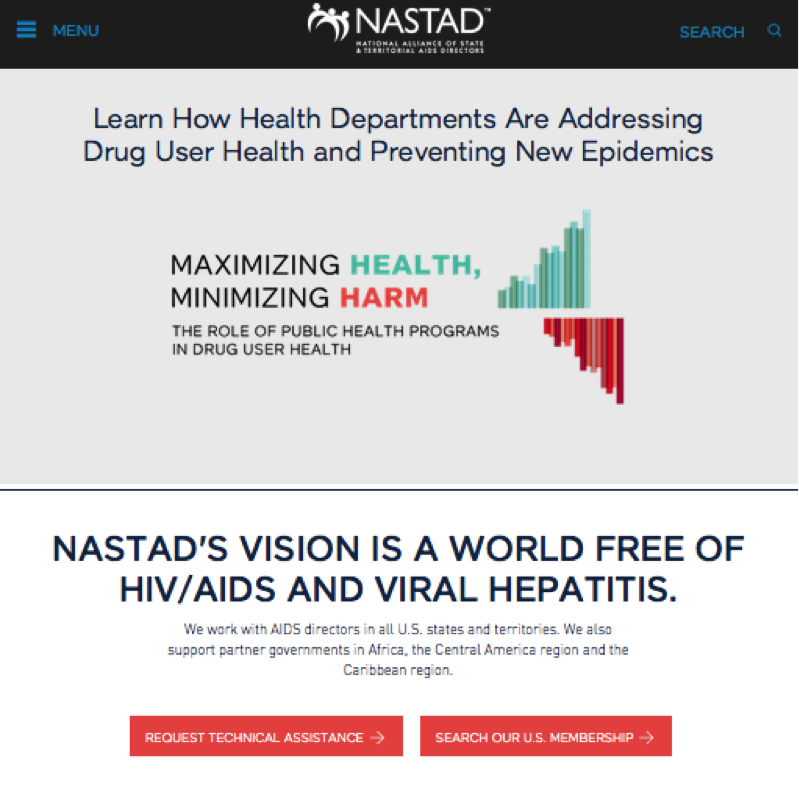Three Tips for Redesigning a Website for the HIV and Hepatitis Communities
Content From: Meico Whitlock, Associate Director, Communication, National Alliance of State & Territorial AIDS Directors (NASTAD)•Published: August 06, 2015•3 min read
Topics

1. Identify Your Audience (and Listen to Them!)
Our first step in the process (even before we identified the need to redesign our website) was to be sure we understood the communication needs of our audience. To do that, we conducted one-on-one interviews, focus groups, and surveys with NASTAD’s primary stakeholders. From these listening sessions, we were able to determine what was working, what needed to be improved, and what steps we could take to enhance our communications in both the short and long term. For example, we learned that email is the preferred way for our members to receive time-sensitive policy and program updates. We also learned that members like access to archived resources on our website, such as policy statements and issue briefs, but had difficulty using the site's search functionality to find them. The website redesign idea emerged from this process.2. Determine Your Goals and Objectives
We identified our goals and objectives for the project based on feedback from the listening sessions and our long-term vision for NASTAD’s communications activities. Our stakeholders told us that one of the biggest challenges they faced on our old site was finding and sharing resources (e.g., fact sheets and links to past webinars). So, one of the primary goals of the project was to streamline the process of finding and sharing content, including implementing a responsive design to make the website accessible across devices and screen sizes. Enhancing the the mobile user experience was particularly important given the nearly 75% increase in mobile phone and tablet website traffic we’ve seen over the last year.3. Have a Vision of Success and Know How to Measure It
After we had a solid understanding of our audiences and goals and objectives, we developed a vision for what “success” would look like. That vision includes increased use of our website and resource downloads, as measured by Google AnalyticsExit Disclaimer and the URL shortenerExit Disclaimer Bit.lyExit Disclaimer, along with increased levels of user satisfaction, as measured by direct feedback from users.What We Learned
Here are five key insights learned during this process, from our own experiences and from useful resources like the HIV.gov (NTEN), that might be helpful for others:- A successful website redesign requires buy-in and support across your organization, including a commitment to investing staff time in the project.
- Have a good understanding of your budget, scope, and timeline before you start the project. This sets clear expectations for everyone involved and can help save time.
- Ask your audience what they want and need – and then listen!
- Developing a website that is responsive to the needs of your audience is an ongoing process that doesn’t stop once your website is “launched.” Continue to listen to your audience and make adjustments as needed. Also, keep in mind that it’s likely you won’t get everything on your wish list during the first round of a redesign—and that’s perfectly okay. Your website can grow and evolve to meet your changing needs, capacity, and resources.
- It’s important to include qualitative feedback (e.g., feedback you receive by email, social media, or even face-to-face) as part of your measures for success. Although qualitative feedback data may not fit neatly into an Excel spreadsheet alongside raw numbers from tools like Google Analytics, those data can be every bit as valuable to your success.
